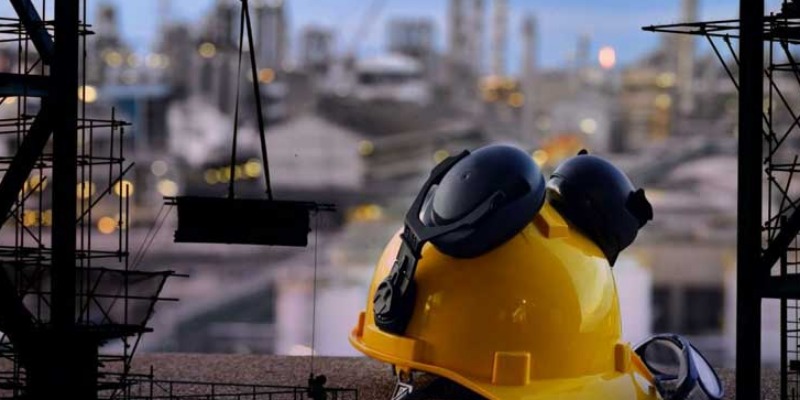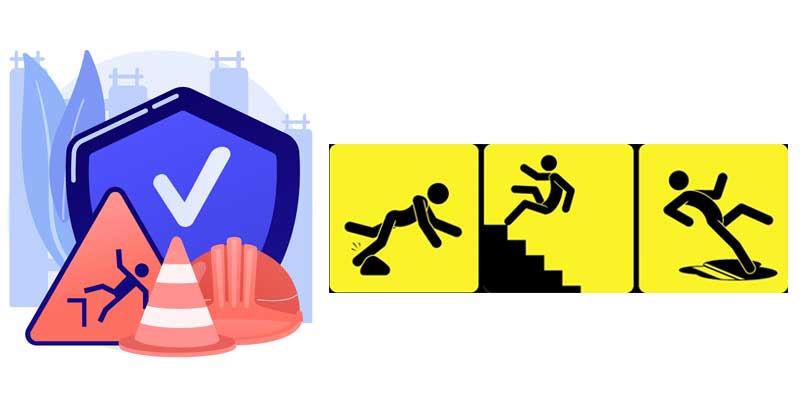Schedule a Call Back
Industries need new health, safety skills to mitigate future risks
 Industry News
Industry News- Oct 02,21

The COVID-19 pandemic has changed the way organisations function, and at the same time, it has heightened the significance of workplace health and safety programs for a business’s success. This facet is especially true for Indian workplaces, many of which already lack adequate Environmental Health and Safety (EHS) programs. As a result, Indian organisations have realised the importance of integrated and upgraded workplace safety programs into their business operations.
One of the most effective ways of integrating health and safety into a business’s operations is by equipping the employees with appropriate competencies to operate in the workplace safely, and health-consciously. By enabling employees to protect themselves physically and mentally, organisations can transform their safety culture by making it more people-centric and crowd-sourced, and eventually, improving business productivity and employee retention.
Workplace safety challenges post-pandemic
Indian workplaces now face several challenges when it comes to workplace safety. These factors tend to directly impact the employees, either physically or mentally, and new health and safety skills can help mitigate these risks significantly. Following are some of the most common challenges faced by workplaces in the country:
Changing work environment: Within the past few years, even barring the pandemic, workplaces have seen drastic changes. These include better technology and machines, improved workplace architecture, heightened health and safety norms, and a lot more. However, the ageing workplace has not completely adopted these changes, which can drastically affect their health and safety of their workers
An ageing workforce: The current workforce is ageing, and there is a rise in hiring younger, less experienced workers. While these young workers may have the right qualifications, they lack a practical understanding of work processes, especially in an industrial setting, and may not take workplace safety seriously. This can be a challenge for organisations that want to uphold their safety culture.
Economic unpredictability: Another factor, which is affecting workplace safety culture, its unpredictability. Over the last 12 months, India has seen two lockdowns and multiple restrictions, which has affected Indian workplaces drastically. This uncertainty seems to be continuing further and is predicted to continue for the next couple of years, making it difficult for organisations to make concrete decisions that transform the company culture.
New skills required to tackle challenges
The pandemic and consequent challenges to workplaces denote the workplace culture change’s vitality to protect employees’ physical and mental health. Here, organisations can work closely with an external safety audit and consultation expert to help them upgrade their safety culture and integrate new skills into their employees.
There are various skills that organisations can focus on and enable their employees to learn and implement these skills in their daily work-life. Below are some of the skills that such organisations can focus on:
Workplace ergonomics: According to the American OSHA, 34% of workplace injuries are ergonomics-related, costing organisations nearly $ 50 billion per year. Thus, organisations must teach their employees how to practice safe, ergonomic hygiene, including lifting, sitting, or moving throughout the day. This would lead to fewer sick leaves, lowered healthcare costs, and healthier employees.
Environmental safety skills: Similarly, organisations must also focus on training employees on environmental safety within the workplace to mitigate risks. Here, many organisations simply ask the employees to carry out safety-related tasks that they may not completely understand; instead, a skill-building exercise can help make safety second nature. Environmental safety skills include material storage and disposal, electrical safety, and general office safety hygiene.
Equipment safety skills: Another skill set organisations must focus on developing within their workforce is equipment safety. With the rise in technology, modern workplaces are populated with specialised equipment requiring specific training to handle safely. If the employees are skilled in using the equipment safely, the company can benefit from fewer workplace accidents.
Cybersecurity skills: Modern workplaces, especially considering the new work-from-home model, rely heavily on technology. However, such technology is often prone to cyberattacks, which may lead to loss of productivity or data leaks in most cases. But in some cases, it can significantly affect the employees’ mental health or affect the performance of critical systems that may then affect the employees’ well-being. So, the company must invest in developing cybersecurity skillsets for their employees.
Mental health skills: Mental health - stress and burnout in particular - is one of the most significant factors that lead to workplace accidents. Stress or burnout in the worker may lack focus, cut corners, or suffer other health-related concerns that may cause workplace injuries.
Integrating EHS audit processes
Most companies may have a COVID-19 safety protocol in place by now, based on government regulations. However, it helps to have these protocols audited by an ESH expert.
An audit involves very in-depth analysis and rigorous examination of processes. It helps benchmark and validates ongoing initiatives to deal with the pandemic and other industrial risk scenarios. The assessment may be based on a host of areas including assessing risks, planning control measures, allocating roles and responsibilities, implementing, and maintaining controls, communication, and training, monitoring effectiveness, and reviewing and revising arrangements.
There are several parameters in these safety audit programs under which an organisation must excel in order to achieve perfect safety credibility. Companies should seize the opportunity and implement these safety audits so that workplace health risks are identified, assessed, and mitigated across the board.
Environmental safety: An organisation shares a unique relationship with its immediate environment, which is often the main source of resources for all its key operations. Yet, big corporations also contribute massively to environmental degradation in several ways. For long-term growth and progress, the organisation needs to maintain a healthy equation with its surroundings. There are several sub-factors in which the performance of an organisation is assessed as per the EHS audits created during the evaluation period.
Occupational health and safety: Employees are among the core stakeholders in an organisation. Safeguarding the health and safety of workers should be a top priority for the corporation. The safety audits enlist measures to strengthen the concept of employee protection during large-scale operations at a workplace. It is an organisation’s responsibility to ensure that they follow the guidelines of the safety audits so that the possibilities of injuries or illnesses caused directly due to the working environment for their employees are avoided completely or, in worst-case scenarios, minimised.
Process safety: Process safety pertains to the immediate and long-term response of an organisation to an unforeseen calamity. Usually, industrial disasters directly affect multiple facets of a company’s work and can also affect the public. Any credible organisation must always be ready to maintain operations during the various phases of a catastrophe. To achieve this objective, the organisation must have a fully functional disaster management wing to react to the calamity with minimum delay. The company’s risk management activities should also work seamlessly in sync with the guidelines specified in the EHS audit. Proactive management to mitigate the effects of disastrous events can ensure that an organisation emerges from such a situation unscathed as compared to its competitors.
Instilling the right skill sets will need a focused approach
To instil the right skillsets that lead to an improved workplace safety culture, organisations must focus on four primary facets of workplace safety:
1. The organisation must understand the needs of the employees and their expectations.
2. It must make the safety culture pragmatic, accessible, and applicable for all.
3. It should hold everyone accountable.
4. The safety culture and skillsets must be mobile and adaptive to meet the changing needs of the current workplace environment.
Industry experts agree that the focus on safety, health, sustainability, and cost reduction is already shaping the business strategy of most companies for 2022. Several businesses have already made significant investments to future-proof their organisations by upgrading safety protocols and bringing in newer skills to ensure that these are successfully implemented across their premises..
About the author:.
Hemant Sethi is the Country Head India of the British Safety Council. He has played an integral part in managing the successful launch of the British Safety Council’s India operation. Prior to this, Hemant Sethi worked with British Airways in South Asia in various management roles in Commercial, Customer Experience & Operations..
Related Stories

Constructing safely: Preventing slips, trips and falls
Performing risk assessment to identify potential for slips, trips, and falls is the first step towards keeping people safe from hazards at the workplace, says Kamarajan M in this article while infor..
Read more
PLI scheme: Need for a course correction
The Government of India is reportedly planning to ease some norms for five sectors (textiles, pharmaceuticals, drones, solar and food processing) to help them better utlise the fund under its Produc..
Read more
Why manufacturers must review their chemical safety protocols
Manufacturers of chemicals, as these are hazadous in nature, should take nessecary steps to improve workplace safety. By minimising injuries and illnesses, companies can save money by avoiding the d..
Read moreRelated Products

Carbide Burrs
SRT Industrial Tools & Equipments offers a wide range of carbide burrs.

Jamshedji Soil Compactor
Jamshedji Constro Equip Pvt Ltd offers a wide range of jamshedji soil compactor.

Ground Pins
Hans Machineries Private Limited offers a wide range of pins, hardened & ground. Read more














